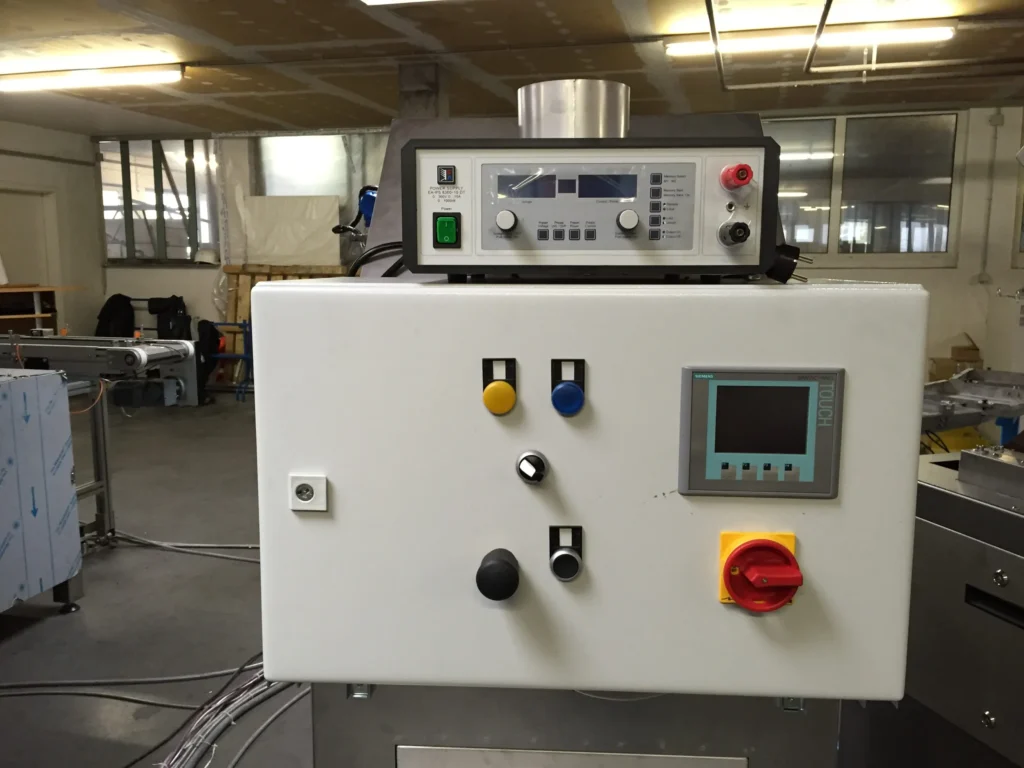This article will compare the rotary switch with four common switches (button switch, toggle switch, slide switch, touch switch), and explore their differences in operation mode, application scenarios, advantages and disadvantages, etc., to help readers better choose the appropriate switch type.
What is rotary switch?
Before comparing, it’s essential to understand what a rotary switch is. As its name implies, a rotary switch operates through a rotational action. A user turns a knob or shaft, which in turn rotates a contact arm/blade inside the switch. Depending on the position, this arm connects to one of several contact points, closing the circuit in a specific manner.
Comparison between rotary switch and push button switch
Operation method:
- Rotary switches operate by rotating a knob or shaft to select different positions.
- Push button switches are activated by pressing and releasing a button.
Application scenario:
- Rotary switches are commonly used in equipment requiring multiple settings, such as multimeters and control panels.
- Push button switches are often found in devices that require momentary or latching actions, like doorbells and appliances.
Advantages and disadvantages:
- Rotary switches offer precise control and multiple positions but have a larger footprint and higher cost.
- Push button switches are compact, cost-effective, and easy to use but are limited to fewer functions and may wear out faster.


Comparison between rotary switch and toggle switch
Operation method:
- Rotary switches operate by rotating a shaft to select different positions.
- Toggle switches are operated by flipping a lever up or down.
Application scenario:
- Rotary switches are commonly used in applications requiring multiple positions, such as instrument selectors or multi-speed fan controls.
- Toggle switches are suitable for on/off control or selecting between two states in applications like power switches or mode selectors.
Advantages and disadvantages:
- Rotary switches offer multiple positions and precise control but require more panel space.
- Toggle switches are compact, easy to use, and provide clear visual feedback but are limited to two positions.
Comparison between rotary switch and slide switch
Operation method:
- Rotary switches operate by rotating a shaft to select different positions.
- Slide switches operate by sliding a lever or knob to different positions.
Application scenario:
- Rotary switches are commonly used in industrial control panels, audio equipment, and multi-position selector circuits.
- Slide switches are often found in consumer electronics, such as power switches on devices.
Advantages and disadvantages:
- Rotary switches offer multiple positions and can handle higher currents, but they require more space and have a higher cost.
- Slide switches are compact, cost-effective, and easy to use, but they typically have fewer positions and lower current ratings compared to rotary switches.


Comparison of Rotary Switches and Touch Switches
Operation Method:
- Rotary Switch Select different positions by rotating a knob or shaft.
- Touch Switch Activated by touch or proximity of a finger or conductive object.
Application Scenarios:
- Rotary Switch Commonly used in industrial control panels, audio equipment, and multi-position selector switches.
- Touch Switch Often seen in modern appliances, touch-sensitive lamps, and capacitive touch screens.
Advantages and Disadvantages:
- Rotary switches are durable, reliable, and suitable for harsh environments. Provide tactile feedback and clear position indication; require physical space for rotation, and positions may be limited.
- Touch switches are stylish, easy to clean, and provide a modern user interface. Allow multiple functions in a compact space; sensitive to environmental factors such as humidity, and may require calibration. Lack of tactile feedback.
Conclusion
In conclusion, rotary switches offer unique advantages over other common switch types. They provide a compact, multi-position switching solution suitable for various applications.
When selecting a switch for your next project, consider the specific requirements and benefits of rotary switches. Contact our team of experts to discuss your switching needs and find the perfect solution.

